Gorenje RIU1346LA Handleiding
Bekijk gratis de handleiding van Gorenje RIU1346LA (7 pagina’s), behorend tot de categorie Koelkast. Deze gids werd als nuttig beoordeeld door 64 mensen en kreeg gemiddeld 3.6 sterren uit 32.5 reviews. Heb je een vraag over Gorenje RIU1346LA of wil je andere gebruikers van dit product iets vragen? Stel een vraag
Pagina 1/7

Instructions for Use
10
Refrigerator - Freezer EN
Thank you for the confidence you have shown by buying this appliance. We hope it will successfully serve its
purpose for many years.
Refrigerator with freezer is for domestic use only.
The lower part of the appliance is refrigerator and is used
for storing fresh foods at the temperature of 0°C and higher.
The upper part is freezer and is used for freezing fresh foods
and storing frozen foods for longer periods of time (up to one
year, depending on the kind of foods you store). The
compartment is marked with four stars.
Before putting into use ................................................. 10
Instructions for use
Mounting instructions
We care for the environment
Energy savings tips
Important ...................................................................... 11
Disposing of the worn out appliance
Placing and installation ................................................ 11
Choosing the right place
Connection to power supply
Adjusting the height of the appliance
Description of the appliance ........................................ 12
Operation control ......................................................... 12
Temperature selection
Use ..................................................................................13
Storing fresh food
Freezing Fresh Foods
Storing Frozen Foods
Defrosting Frozen Food
How to make ice cubes
Maintenance and cleaning ............................................14
Automatic defrosting of the refrigerator
Manual Defrosting of the Frezing Compartment
Cleaning the appliance
Switch off the appliance when not in use
Troubleshooting guide ..................................................15
Before putting into use
Before connecting the appliance to the power mains, leave it
stand for about 2 hours. This will reduce the probability of
malfunctions in the cooling system due to transport and
handling.
Clean the appliance thoroughly, especially the interior (see
Cleaning and Maintenance).
If the interior accessories are not correctly placed, rearrange
them as described in the chapter Description of the
Appliance.
Instructions for use
These instructions for use are intended for the user. They
describe the appliance and its correct and safe use. As they
were prepared for various types/models of refrigerators, you
may find descriptions of functions and accessories that are not
available in your appliance.
Mounting instructions
Integrated appliances are equipped with instructions for
mounting the appliance into the kitchen unit.
The appliance should be professionally mounted by a qualified
technician; mounting instructions are for his use only.
We care for the environment
Our appliances are distributed in packaging made of
environmentally friendly materials which can be safely
recycled, disposed off or destroyed, with no effect on the
nature whatsoever.
These instructions are printed either on recycled paper or
chlorine-free bleached paper.
When your appliance finally wears out, please do not burden
the environment with it; call your nearest authorized service
agent (see Disposing of the worn out appliance).
Energy savings tips
Do not open the door too often, especially when the weather
is wet and hot. Once you open the door, close it as soon as
possible. This is especially important if you have an upright
model.
Check periodically if adequate ventilation is allowed
(undisturbed circulation of air through the bottom rail
openings).
Use higher thermostat settings only when required or
recommended.
Before putting fresh food into the appliance, let the food cool
down to room temperature.
A layer of ice and frost will increase energy consumption.
Therefore, clean the appliance as soon as the layer is
3-5 mm thick.
If the gasket is damaged or if it does not provide a tight seal,
the energy consumption will be substantially higher. To
restore efficiency, replace the gasket.
Condenser at the bottom of the appliance must always be
clean and free of dust (see section Cleaning of the
Appliance).
Always comply with the instructions in sections Positioning
and Energy Saving Tips; otherwise the energy consumption
may be substantially higher.

Instructions for Use 11
Important
This appliance is manufactured in compliance with relevant
safety standards. However, it is still advisable it is not used
without due supervision by persons with diminished physical,
motoric, or mental capabilities or persons with inadequate
experience or knowledge. The same recommendation
applies to minors using the appliance.
If you bought this appliance to replace an old one that was
equipped with a lock that cannot be opened from inside of
the appliance (lock, bolt), make sure that the lock is broken.
This will make it impossible for children to lock themselves
inside the refrigerator and suffocate.
The appliance must be correctly connected to the power
mains (see: Connecting to the Power Mains).
Do not touch the cooled surfaces while the appliance
operates, especially not with wet hands, because the skin
may stick to the cold surfaces.
Do not freeze bottles containing liquid, especially not soft
drinks, such as mineral water, sparkling wine, beer, cola
etc., because liquid expands during freezing and the glass
bottle is very likely to blow up.
Do not eat frozen food (bread, fruit, vegetables), because
you can get frostbites.
If the food has strange smell or colour, throw it away,
because it is very likely that it is spoiled and therefore
dangerous to eat.
Disconnect the appliance from the power supply before
repairing it (only a qualified technician should repair it),
before cleaning and before replacing the light bulb.
Do not defrost the appliance with other electric appliances
(as for example with hair dryer) and never scrape the frost
layer with sharp objects. Use only enclosed tools or tools
recommended by the manufacturer.
To protect the environment, be careful not to damage the
rear wall of the appliance (the condenser unit or the tubes,
for example when moving the appliance) or any part of the
refrigeration system inside the appliance.
The refrigeration system of the appliance is filled with
refrigerant and oil. When the appliance is damaged, handle
it with care and dispose it of in compliance with environment-
protection regulations (see We Care for the Environment).
If the supply cord is damaged, it must be replaced by the
manufacturer, a service agent or other qualified person in
order to avoid hazard.
The rating plate is located inside the appliance or outside on
the rear wall.
Warning! Ventilation slots on the appliance or a built-in
element must always be clean and unobstructed.
Warning! Do not use mechanical devices or tools to defrost
the refrigerator, nor any other methods except for those
recommended by the manufacturer.
Warning! When installing, cleaning, or removing the
appliance, make sure the insulation on the refrigeration
system parts is not damaged. Thus you will also prevent
damage to the environment.
Warning! Do not use electric appliances in the refrigerator
or freezer interior, except for those expressly allowed by the
refrigerator-freezer manufacturer.
After the installation, the appliance mains plug should be
accessible!
The symbol on the product or on its packaging
indicates that this product may not be treated as
household waste. Instead it shall be handed over
to the applicable collection point for the recycling
of electrical and electronic equipment. By ensuring this
product is disposed of correctly, you will help prevent
potential negative consequences for the environment and
human health, which could otherwise be caused by
inappropriate waste handling of thisproduct. For more
detailed information about recycling of this product,
please contact your local city office, your household waste
disposal service or the shop where you purchased the
product.
Disposing of the worn out appliance
When your appliance finally wears out, dispose of it. If the
appliance has a lock, break it to prevent any accidents
(danger of children getting locked inside the appliance).
The refrigeration system of the appliance is filled with
refrigerant and insulating substances which should be
treated and processed separately. Call your nearest
authorized service agent or specialized servicing centre. If
you cannot find one, contact your local authorities or your
distributor. Be careful not to damage the tubes on the rear
wall of the appliance (danger of pollution).
To avoid pollution of the environment make sure not to
damage the hose at the bottom of the appliance.
Placing and installation
Choosing the right place
Place the appliance in a dry and regularly ventilated room.
Allowed ambient temperature depends on the model (class) of
the appliance and it is stated on the rating plate of the
appliance.
Never place the appliance near heat emitting devices (e.g.
cooker, radiator, water heater or similar devices) and do not
expose it to direct sunlight.
The appliance should be positioned at least 3 cm away from
the electric or gas cooker and at least 30 cm away from the oil
or coal stove. If this is not possible, use appropriate insulation.
Class Ambient temperature
SN (subnormal) from + 10°C to + 32°C
N (normal) from + 16°C to + 32°C
ST (sub-tropical) from + 16°C to + 38°C
T (tropical) from + 16°C to + 43°C
Connection to power supply
Use the cable and plug to connect the appliance to the power
supply socket with a ground terminal (safety socket).
Required nominal voltage and frequency are indicated on the
rating plate.
The connections to the mains supply and earthing have to be
made according to currently relevant standards and
regulations. The appliance resists temporary voltage
fluctuations of up to +/- 6%.
Adjusting the height of the appliance
The appliance is equipped with four adjustable legs which allow
adjusting the height from 82 to 90 cm. The height must be
adjusted prior to building the appliance into the opening slot,
and it should be set at such height that the top panel of the
appliance fits exactly below the kitchen worktop (see Mounting
Instructions).

Instructions for Use
12
Description of the appliance
B
A
3
1
2
Refrigerator (A)
Refrigerator is used for storing fresh foods for few days.
Freezer (B)
Freezer is used for freezing fresh foods and for storing already
frozen foods.
Opening the freezer door
Shelf (1)
The shelf may be placed randomly on any of the guide slots in
the interior of the appliance. It is protected against sliding out.
In case you may wish to alter the position of the
shelf:
lift the shelf by hand and pull it towards you until it
reaches the crack in the guide slot;
at the guide interruption point the shelf may be adjusted
at random height;
select the height of your choice and push the shelf all
the way in to the rear end of the guide slot.
In case you may wish to remove the shelf from the
appliance:
lift the shelf by hand and pull it towards you until it
reaches the crack in the guide slot;
at the guide interruption point lift the left side of the shelf
up and pull it out from the appliance in the inclined
position,
reinsertion is carried out in the opposite procedure.
Glass shelves are protected with plastic edge frames.
Quickly perishable food should be stored closer to the back
wall, i.e. in the coldest part of the shelves.
Defrosting water outlet (2)
The interior of the refrigerator is cooled with a cooling plate
incorporated in the rear wall. Under the plate there are a
channel and an outlet for defrosting water.
Regularly check the defrosting water outlet and the channel
because they should never be clogged (as for example with
food residues). If clogged, use a plastic straw to clean it.
Crisp tray and serving tray (3)
The tray at the bottom of the refrigerator is covered with the
serving tray. This cover protects the stored fruit and vegetables
from excessive drying.
Door liner
The door liner consists of various shelves or holders used for
storing eggs, cheese, butter and yogurt as well as other
smaller packages, tubes, cans etc.
The lower shelf is used for storing bottles.
Illumination in the interior of the refrigerator
The light for illuminating the interior of the appliance is
switched on when the door is opened. Operation of the light
does not depend on the position of the thermostat knob.
Operation control
Appliance operation is controlled with the thermostat knob
located in the upper right part inside the appliance.
Turn the knob from the position towards andSTOP (0) 7
backwards.
Temperature selection
Higher settings on the knob (towards ) mean lower7
temperatures (colder) in all three compartments of the
appliance. Temperature in the interior of the appliance may
even drop below 0°C. Higher settings should only be used
when higher temperature is recommended or required.
Product specificaties
| Merk: | Gorenje |
| Categorie: | Koelkast |
| Model: | RIU1346LA |
Heb je hulp nodig?
Als je hulp nodig hebt met Gorenje RIU1346LA stel dan hieronder een vraag en andere gebruikers zullen je antwoorden
Handleiding Koelkast Gorenje
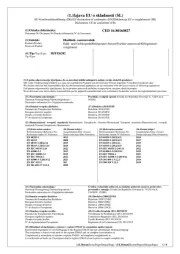
5 September 2025
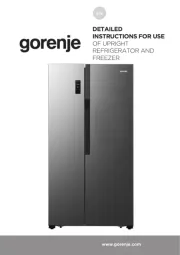
5 September 2025
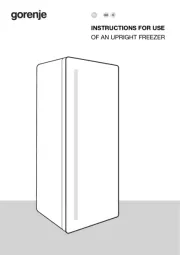
4 September 2025
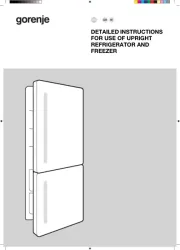
4 September 2025
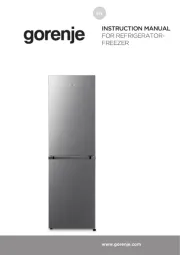
4 September 2025
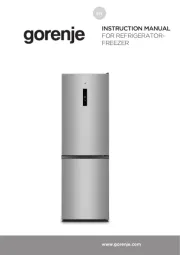
4 September 2025
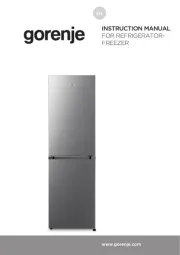
4 September 2025
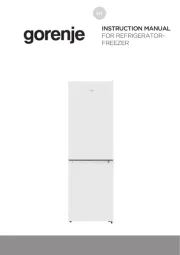
4 September 2025
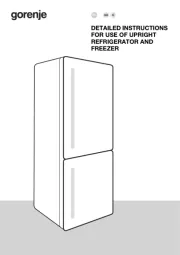
8 Augustus 2025
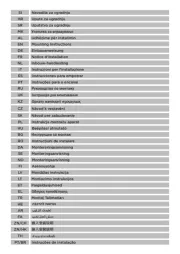
19 April 2025
Handleiding Koelkast
- Newpol
- Vinotemp
- Krowne
- ONYX
- BEKO
- General Electric
- Gardenline
- Smeg
- Jocel
- BSK
- Nemco
- LG
- Rangemaster
- Aldi
- Edy
Nieuwste handleidingen voor Koelkast
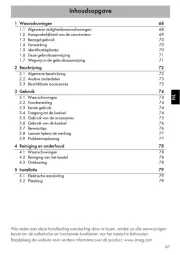
18 September 2025
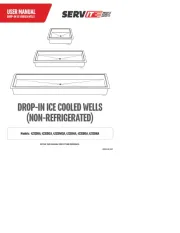
18 September 2025
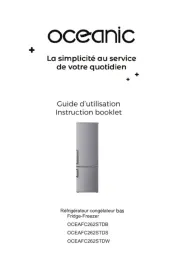
17 September 2025
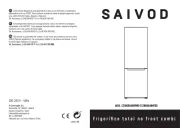
16 September 2025
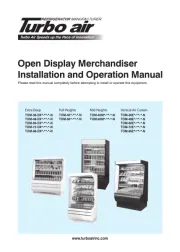
16 September 2025
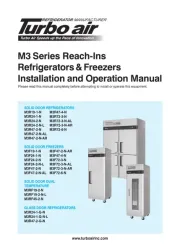
16 September 2025
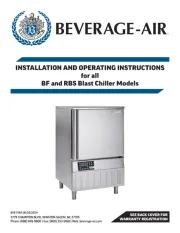
16 September 2025
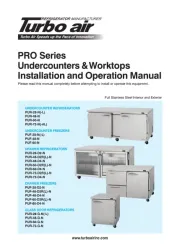
16 September 2025
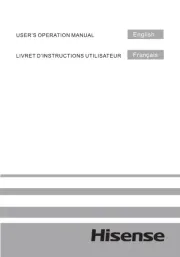
16 September 2025
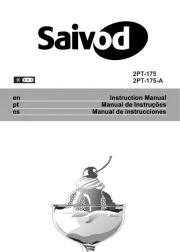
16 September 2025